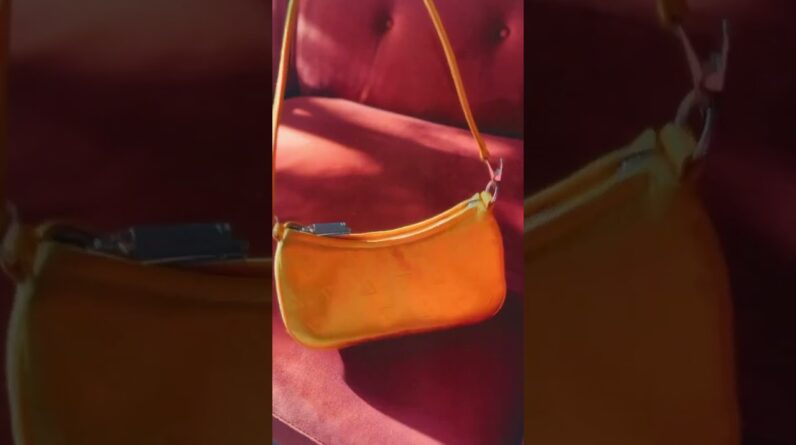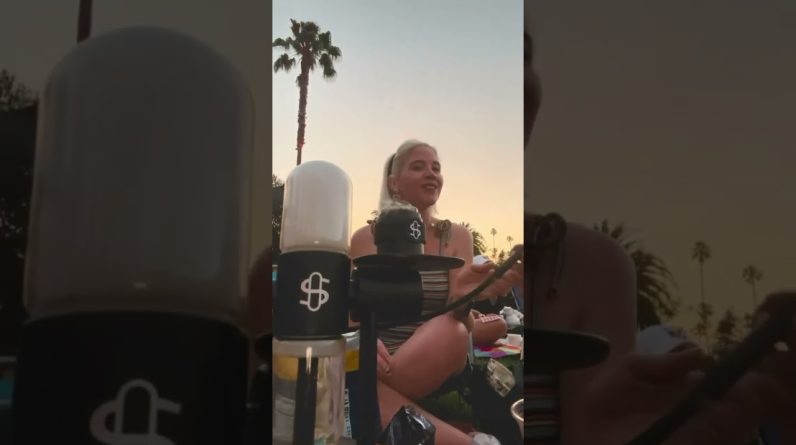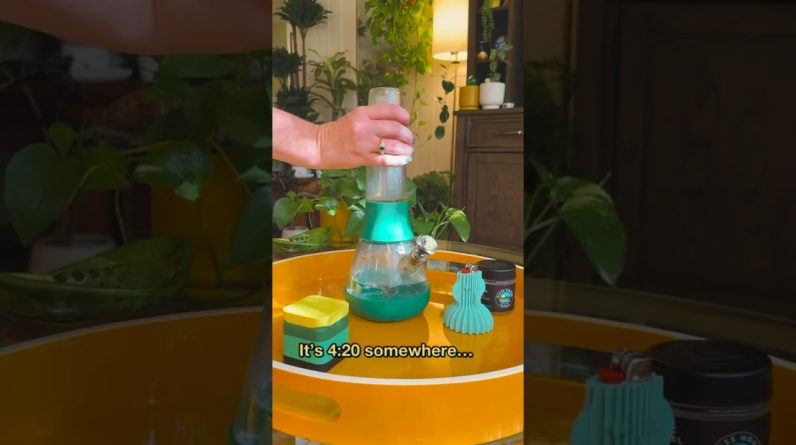Tattooed people are some of the toughest individuals around. The heavily tattooed aren’t prone to lifting heavier weights or be more likely to capture an MMA championship. But they sure can take a shit-ton of pain. Be they a glutton for punishment, a lover of art, or something else entirely, the tattooed sit through the oft-suffering experience of several needles at speeds between 50 and 3,000 times per minute. And we keep coming back for more.
While the machinery and process have improved over the years, getting tattooed is still painful for the artist and customer alike. Penetrating through five sublayers of the epidermis, or 1/16 of an inch into the skin, a tattoo can make even the stiffest of upper lips wince. For the artist, years of tattooing in hunched-over positions does a number on the body. Back, eye, and neck pains are typical, as well as headaches.
The tattoo community is like any other: a lot of people consume pot. Artists do so on or off the clock for recreational and medical reasons. Some tattoo clients report satisfying results using cannabis topicals, highlighting their efficacy during aftercare. The two to three-week healing period for a tattoo is critical. Mistakes can lead to health concerns and a new tattoo lacking saturation.
An abundance of topicals are already on the market, but few have focused on tattoo aftercare. More rare, few, if any, have attempted to address client pain and inflammation during tattooing.
A few months back, while getting tattooed at Brooklyn’s Electric Anvil, my artist, Tron, mentioned a CBD cream explicitly focusing on tattooing and aftercare. Tattoo Nectar, the Michigan-based, 250mg full spectrum CBD topical startup, was launched this past 4/20 by grower Orcannica, Green Fish Seeds and veteran tattoo artists Julian Bast and Danny G.
CBD topicals are a dime a dozen, and someone is always looking to cash in, even on niche markets. But the combination of tattoo and cultivation expertise piqued my interest. Maybe this isn’t just a cash grab claiming CBD cures another random pain.
To find out, I got some Tattoo Nectar, selected a pot-themed flash tattoo from Tron, and set out to see if CBD tattoo care is a hunk of bunk or a possible new option.
Tattoo Healing Methods
Depending on the artist, the recommended aftercare process may vary from lax to almost regimented, with specific product recommendations to pick up at the local pharmacy.
A commonly recommended method includes lightly applying an over-the-counter skin care ointment, typically Aquaphor, for three or so days. Then switch to an unscented lotion, like Aveeno, for approximately 11 more days. Application amounts will vary depending on the shop recs.
Another method is the product-fee dry healing method. Some artists say the process is a safe, all-natural approach, while others feel it carries risks to your skin and tattoo quality. Weirdos like myself endorse it because it makes the bed you share with your girlfriend colorful with skin flakes for a few days. How someone puts up with me remains a mystery, but that’s for another article.
There are also skin adhesive bandages, like SecondSkin, where clients keep the same dressing over the wound for several days. I tried the method earlier this year in Austin, Texas. I’d definitely do it again, especially if I can avoid the familiar “ink sack,” where excess ink and plasma slosh around between your epidermis and the bandage. It’s kind of like a gross human waterbed.
Prior to starting development on Tattoo Nectar two years ago, Bast recommended clients rely on antibacterial soap and avoid direct sunlight early on. He suggests unscented lotion in the following days, applying only when the tattoo itches. He also used adhesives at times, but advises against Tegaderm after two tattoo-damaging experiences of his own.
Tron recommends nothing for the first 5 days then switching to an unscented lotion. However, she and other artists note that, like drug consumption, everybody reacts differently. If you don’t experience an ideal effect, consult with a professional and consider changing course.
No matter your preferred aftercare method, tattoos should be kept away from direct water exposure while healing, save for quick cleanings in the shower or sink. The tattoo will likely go through several noteworthy healing phases. Expect blood and plasma leakage early on. A few rounds of scabbing may come afterward. The urge to itch will rise as body hair grows back in. Fight the desire to scratch or risk pulling off unhealed scabs and diminishing ink saturation in those spots.
Ointment application guidelines remain the same as well. Start with a small amount covering a fingertip. Begin to cover the tattoo in a thin layer of jelly. Avoid using excessive amounts or risk washing out your tattoo, making it look like it’s been on your skin for a decade.
“Less is always always more in any case,” Tron said.
Getting Tattooed With CBD Cream
Orcannica emphasized using the cream during the tattoo process, piquing my interest. Tattoo artists typically use petroleum jelly to help keep blood at bay and bactine as a minor numbing agent. I was excited to see what CBD might be able to do in place of these two items.
Bast feels CBD’s oft-reported anti-inflammatory and skin hydration properties, and a shea-butter based cream, benefit both artist and client.
“Tattooers are used to the feel of the weird layer of petroleum and glide over it,” he said, noting that shea butter absorbs into the skin, leaving less of an oily surface for the artist to work with.
I wasn’t expecting any topical, save for a numbing agent, to entirely remove the pain. But what I did notice was a slight cooling relief when getting tattooed. The effect was particularly noticeable when resuming tattooing after a quick break. The first one or two touches from the gun to my skin after a break are the worst moments during any of my tattoos. Those first couple interactions still hurt with Tattoo Nectar, but the cooling effect cut into the pain, making the transition back to the needles less jarring.
The most beneficial impact of CBD was by far on the final product. After several hours of tattooing, skin is often red and swollen from the trauma it just endured. It’s one of the many reasons why artists request follow-up photos several weeks afterward to see their work in its healed glory. Note the difference between Tron’s tattoo in June to the results after a three-hour quarter sleeve session with the incredible Yoni Zilber back in 2011.
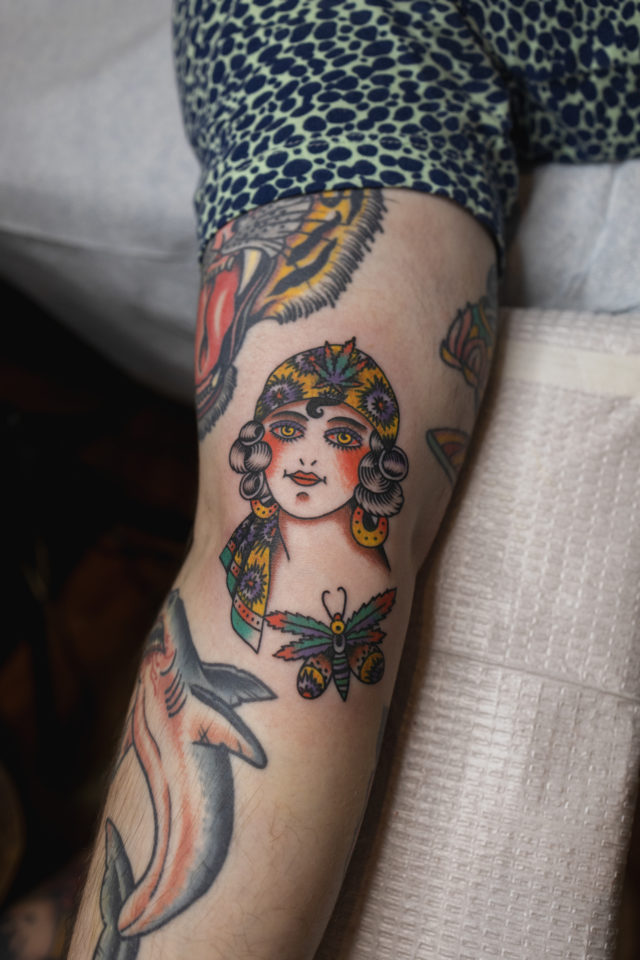
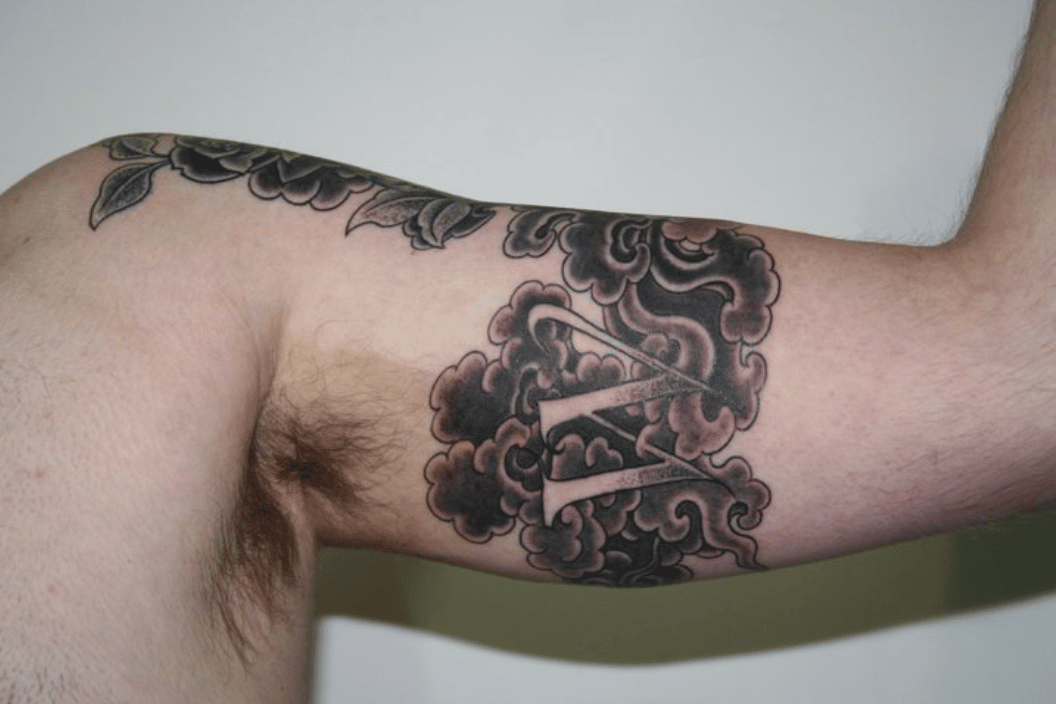
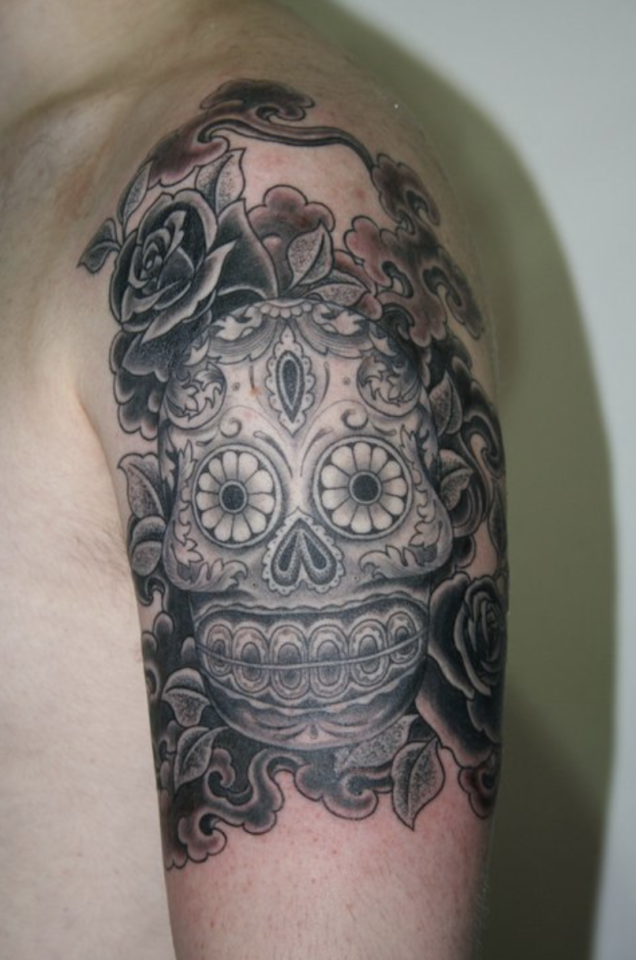
This comparison also reminds me how badly I washed out the black ink in Yoni’s sleeve with excessive ointment. Much of the black is now a blue-grey, a look I enjoy but not what I set out to get. Time to book a touch up session.
Using CBD For Aftercare
Ever the habitual over-applier of ointments, my first non-dry healed tattoo in several years was a new but familiar experience.
The first difference I noticed was the sensation between CBD creams and petroleum jelly. Even the lightest dab of Aquaphor can be a greasy mess on clothes or anything it comes in contact with. Someone like me who erroneously layers it on might as well put a bubble around that new tattoo or risk leaving a trail of oily touchpoints for the next few days. That in mind, I remained conscious of running into people or objects with CBD cream on. I still felt more moisture than usual, but it didn’t feel like I had sticky goop on me. Rather, the feeling went away like any other shea butter topical might.
Overall, I didn’t notice much of a difference between Tattoo Nectar and Aveeno. Though, my skin appeared to stay moist longer with the Tattoo Nectar. Instead of applying a lotion three or four times a day, I used Tattoo Nectar once in the morning and evening.
After two weeks of applications, my new tattoo healed equally to others that utilized dry healing or other ointments. As a proponent of dry healing, CBD/Tattoo Nectar didn’t convert me on aftercare methods. Still, after two and half weeks, my tattoo maintained its saturation. My skin still needs to heal but that is common for me.
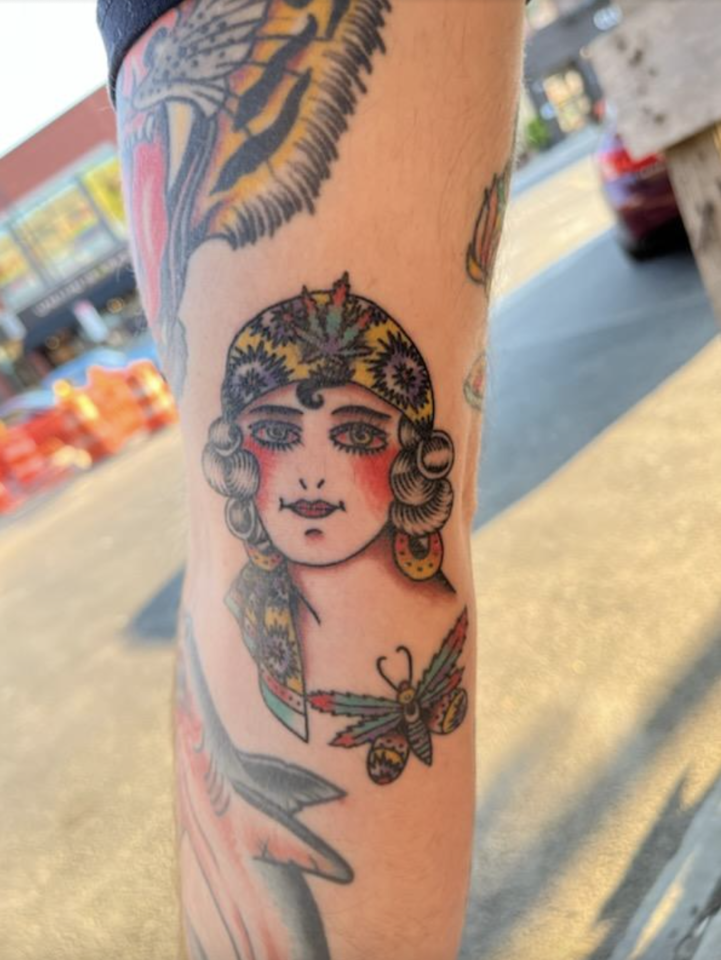
Piquing my interest most was its effect on tattooing and pain management. Tattoo Nectar provided a noticeable cooling sensation while keeping inflammation slightly at bay. Tron and others at the shop took notice as well.
“I definitely plan to use it more and see how that affects other tattoos,” Tron said. Since our session, she reports tattooing seven to 10 additional clients with the cream, all to positive results. She reports other artists at the shop showing interest in using Tattoo Nectar or CBD creams, particularly with black and grey tattoos.
With CBD/Tattoo Nectar seemingly holding up to the first challenge, I’m now excited to see if it can sustain its results during a more extended tattoo session. I’d also like to try other CBD topicals and doses to assess their effect.
I’m also interested to see if the company can survive. Cannabis is an oversaturated market where even quality products struggle to break through. Meanwhile Tron wonders if it can be made into a spray as a bactine replacement.
Bast said the company continues to remain a small batch organization, promoting through word of mouth recommendations in the tattoo community. Acknowledging the long and often sacred uses of tattoos, cannabis and psychedelics alike, he said the company hopes to honor each practice properly.
He said cannabis and psychedelics are excellent for connecting with one’s self. In tattooing, “You submit to the pain and you accept that I have to take the ride,” he explained.
Use this experience as you will, and remember that everyone’s experience varies depending on a range of factors. Stick to trusted products that offer clear test results on their website and/or product packaging.
The post Here’s What Happened When I Used a CBD Topical for Getting Tattooed appeared first on High Times.
